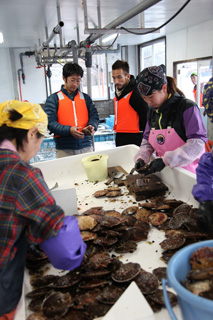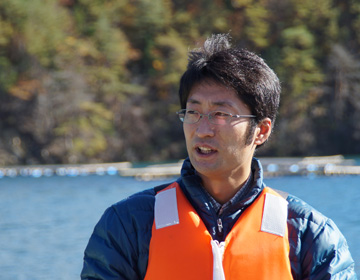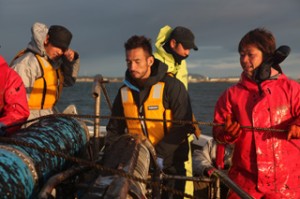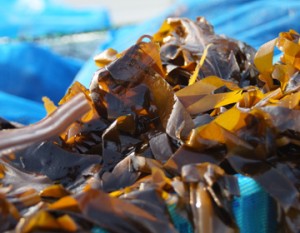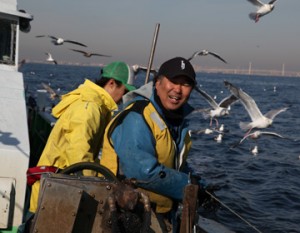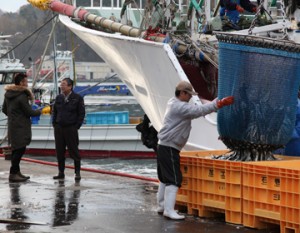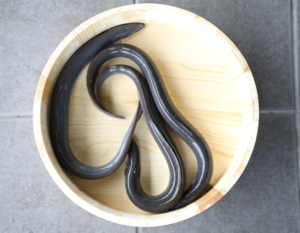Oysters are a specialty of spring!?
The taste of fresh oysters is a milky flavor that melts in your mouth. You can also enjoy them in hot pot which warms the body. In winter, one longs for oyster dishes. It is generally thought that oysters are a specialty of winter. Actually, the season for oysters is spring, Shin Hatakeyama, the oyster farmer told us.
”In spring, planktons increase in the sea, and the oysters that feed on them are the most delicious.” The oysters of Miyagi are somewhat smaller than the oysters of Hiroshima, so they are suited to be eaten fresh. The oysters of Miyagi have a rich taste and intense flavor.
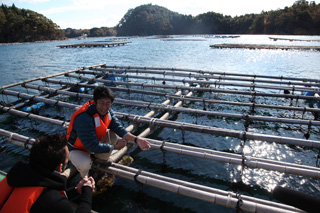
Oysters nurtured in the sea
Hatakeyama took us on his small boat, and showed us the farm. It was quite close to the coastline within a bay, yet the sea was 20 meters deep. In the water, there were huge wooden rafts about 15 square meters each. Underneath the rafts hung many ropes with a huge amount of oyster shells attached to them. These oyster shells are beds for baby oysters. There are approximately 300 seed oysters attached to a rope, and the oysters grow in the sea, eating plankton.
”We put the seed oysters in the sea in spring, and we ship them in the fall or winter of the following year. In the second spring, we pull up all the ropes, place the oysters in a hot water bath, so that nothing else grows on them. It’s just like weeding the field. Apart from that, we just leave them in the sea. It takes about two years from seed oysters until shipping.”
Oysters in a hot water bath! That was surprising. Of about 300 seed oysters, only 100 to 150 oysters grow big enough to be shipped.
Sanriku Bay is a perfect place for oyster farming
We were out on the ocean, but the boat did not rock very much. The calm sea within the bay makes it suitable for oyster farming. ”Miyagi has an active oyster farming industry because of the calm sea. ” explained Hatakeyama. For a industry to take root in the region, nature has great influence.
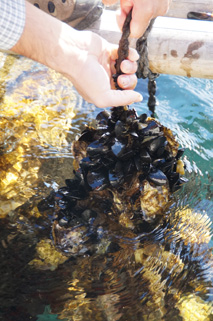
After the Quake.
The Moune area in Kesennuma-shi where Hatakeyama has his farm, was also hard hit by the Tsunami. The 70 farming rafts and boats he owned were all washed away. It was so devastating that the number of oyster farmers was reduced to less than half. But the seed oysters of Mangokuura in Ishinomaki survived. That left great hope for reconstruction. ”If the seed oysters had been washed away too, the oyster industry of Miyagi would have been totally finished.”he said.
He has now resumed oyster farming, working together with locals as a cooperative. He is now harvesting and shipping oysters.
Revival with oysters
”We have restarted, but I think it’s still far from reconstruction. My goal is to develop processed products such as smoked oysters that can be sold year round and at a stable price. I want it to be another pillar of our business. I listen to the opinions of not only the local people but also foreigners to develop various new products.”
He has set up a non-profit organization called Peace Nature Labo for the development of new processed food products, and he is also committed to planning the rebuilding of the local community. His aim is not just rebuilding the ways of life before the disaster, but to develop further beyond.
